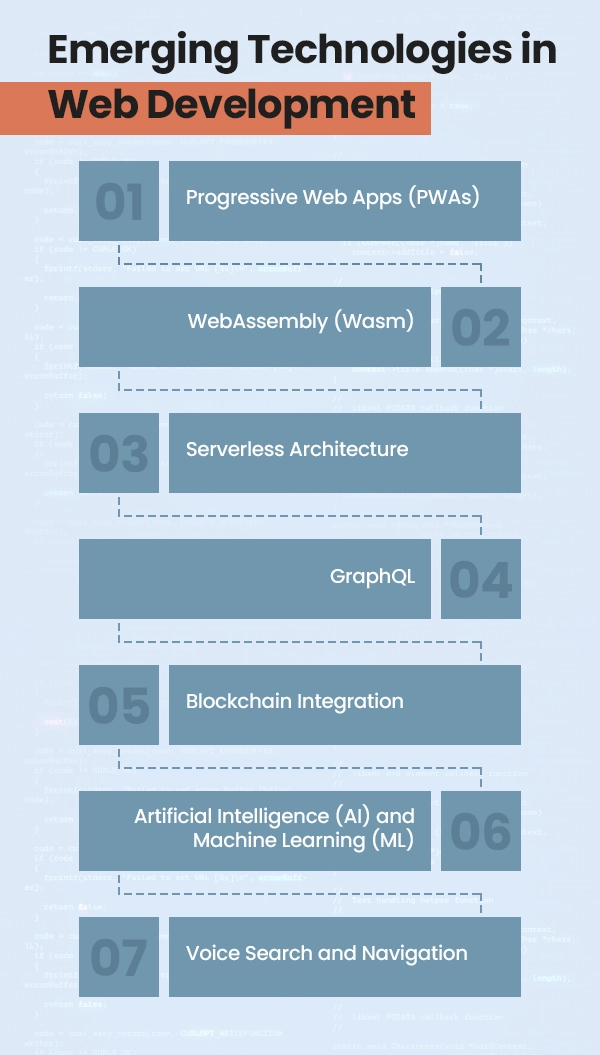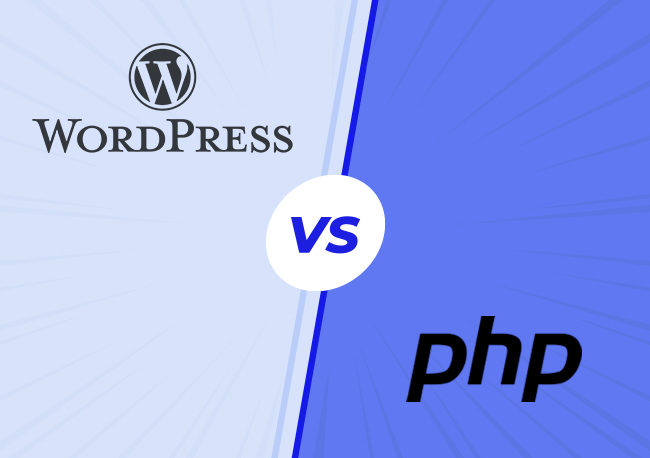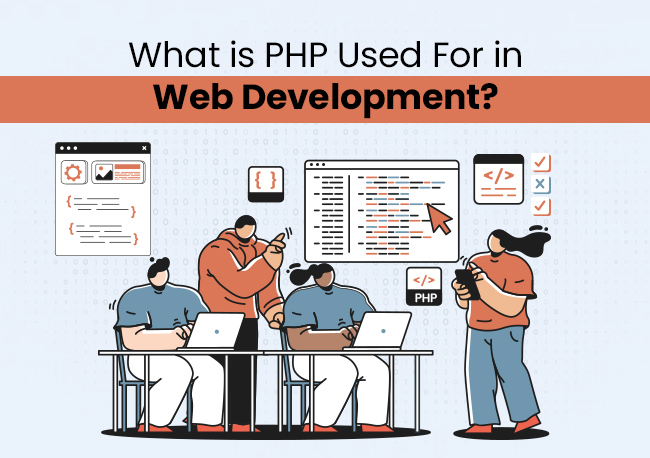| Getting your Trinity Audio player ready... |
Web Development, also known as website development, involves all the tasks from creating to managing a website that runs in an internet browser. It includes building websites, maintaining, designing, programming, etc.
As time evolves, so does the tech industry which offers exciting and innovative prospects for people willing to grow, there has been speculation surrounding the future of web development.
With the rise of alternative technologies like mobile apps and progressive web applications (PWAs), some have questioned whether traditional web development is on the decline. However, such assertions fail to acknowledge the evolving landscape of web development and its enduring relevance in the digital world.
This continuous growth requires rapid changes in every aspect, including web development therefore, it remains a prudent career even in 2024.
History of Web
To deeply understand the present and future of web development, it is important to examine its history.
- In the late 1980s, the World Wide Web (WWW), originated by Sir Tim Berners-Lee laid the foundation for modern web development.
- In 1991, Berners-Lee introduced HTML (Hypertext Markup Language), providing a standardized way to create and format web pages. This introduction marked the beginning of a revolution in information sharing and online communication.
Also Read: What Is A Website Name?
➢ A Journey through the Evolution of Web Development
Throughout the 1990s, web development saw some significant advancements with the introduction of technologies in web development, like CSS (Cascading Style Sheets) for styling web pages and JavaScript for adding interactivity. With these innovations, we saw the rise of dynamic websites, eCommerce websites, social networking, and other online services.
The early 2000s witnessed the rise of Web 2.0, characterized by user-generated content, social media platforms, and interactive web applications. Technologies such as AJAX (Asynchronous JavaScript and XML) enabled smoother, more responsive web experiences; on the other hand, content management systems (CMS) like WordPress and Drupal simplified website creation and management.
In the subsequent years, web development continued to evolve with the rise of mobile devices and responsive web design. The need to create websites that adapt seamlessly to different screen sizes and resolutions led to the development of frameworks like Bootstrap and Foundation, streamlining the process of building responsive layouts.
The emergence of HTML5 and CSS3 brought about further enhancements, enabling developers to create richer, more immersive web experiences with multimedia content, animations, and advanced styling options.
On the other hand, JavaScript frameworks like AngularJS, React, and Vue.js revolutionized front-end development, empowering developers to build complex single-page applications (SPAs) easily.
➢ How has Web Development Adapted to Changing Needs?
From the early days when the internet first came into existence, web development has come a long way. With the increasing demand for smartphones and interactive platforms, the need for faster and highly reactive web applications has become an inevitability.
To cope with this demand, it has become essential for developers to adapt to the changes and meet the requirements of the latest technology trends. Therefore, the web developer works on the overall architecture and design, data flow, database management, UI interaction, security, and much more to create a suitable platform.
Also Read: What Makes A Good Website Checklist? A Complete Guide
What’s the Truth – Is Web Development Dying?
Web development isn’t dying; it’s evolving. Think of it like a caterpillar turning into a butterfly. Sure, it might look different, but it’s still flying around doing its thing.
With all the progress and cutting-edge technologies, the truth is intact that web development isn’t going to die anytime soon. New technologies, frameworks, languages, and devices are always in trend so the need for web developers continues to grow and it continues to be a thriving field.
The web will continue to change in the future, and there will always be a need for new websites, apps, and platforms, which will be possible with web developers who are well-versed and highly skilled.
So, to answer your question, Web Development isn’t going anywhere soon! It’s just growing and adapting, like everything else in this ever-changing world.
What is the Current Status of Web Development?
The current status of web development is thriving!!
It’s like a bustling city, constantly growing and evolving with new technologies, frameworks, and tools. Developers always push boundaries, creating innovative websites and applications that enhance user experiences and make the internet more accessible and interactive.
From responsive design to progressive web apps, web development is at the forefront of digital innovation, shaping how we connect, communicate, and conduct business online.
The trend toward sophisticated and advanced web platforms has gained enduring popularity, highlighted by a projected $6.4 trillion global eCommerce market by 2024, over 50% of web traffic originating from mobile devices, and a compelling 67% surge in cyber attacks in recent years.
This underscores a growing emphasis on superior user experiences and robust security features. Every business needs to be well informed about web development’s basics and important elements to compete and be prominent in the market.
Adhering to this, many industries, such as eCommerce, information technology, healthcare, finance, education, and entertainment, must require all the essential Web development skills to create, build, design, and manage websites.
This, in return, has developed a demand for upskilled web developers and tools.
What are the Emerging Technologies in Web Development & How Will They Shape the Future?
Emerging technologies in web development are constantly evolving, reshaping the digital landscape and how we interact with the internet. Some of the key emerging technologies and how they are shaping the future of web development:

➔ Progressive Web Apps (PWAs)
PWAs are becoming increasingly popular as they provide a seamless experience across various devices and platforms.
Imagine you have a website that you visit often; maybe it’s for news, shopping, or anything else. What if that website could act more like an app on your phone?
That’s basically what a Progressive Web App does.PWAs combine the best features of websites and mobile applications. Think of it as a hybrid between a website and a mobile app. It’s like having the best of both worlds. You can access it through your web browser just like any other site, but it behaves and feels more like a native app that you download from an app store.
They offer fast loading times, offline capabilities, push notifications, and an app-like user experience.
➔ WebAssembly (Wasm)
Imagine you have a big bookshelf with books written in different languages. Each book represents a program or an application, and each language represents a different programming language like JavaScript, Python, or C++. Now, when you want to read a book, you need to understand the language it’s written in, right?
WebAssembly is like having a special translator that can read all those books and convert them into a language your web browser understands easily. It’s like having a universal translator for programming languages. So, even if the book was originally written in C++ or any other language, WebAssembly can make it work smoothly in your web browser without you needing to install anything extra.
This means that WebAssembly opens up possibilities for complex web applications, including games, multimedia editing tools, and more.
Also Read: WordPress Vs PHP Websites – Difference To Know
➔ Serverless Architecture
Serverless architecture abstracts server management, allowing developers to focus solely on writing code. Cloud providers manage the infrastructure, scaling, and maintenance automatically. Serverless computing offers cost-effectiveness, scalability, and reduced time to market for web applications.
In traditional setups, you have to manage servers yourself. You rent them, maintain them, and ensure they run smoothly. But with serverless architecture, you don’t have to worry about any of that. You just focus on your application; the cloud provider handles everything else.
Think of it like ordering food delivery instead of cooking at home. You tell the restaurant what you want, and they handle the cooking, packaging, and delivery. You don’t have to worry about shopping for ingredients or doing the dishes afterwards.
➔ GraphQL
GraphQL is a query language for APIs that allows clients to request only the needed data. It provides a more efficient and flexible alternative to traditional RESTful APIs. With GraphQL, developers can retrieve multiple resources in a single request, reducing over-fetching and under-fetching of data.
It’s like you are at a restaurant and want to order food. With traditional methods, you had to ask for each dish separately, like “Can I have a burger?” and then “Could I also get some fries?” It’s like going back and forth a lot.
But with GraphQL, it’s like having a smart waiter who knows exactly what you want by asking once. You tell the waiter what you want, like, “I’m hungry, I want a burger, fries, and a drink.” Then the waiter goes and gets everything for you without needing you to ask for each item separately.
➔ Blockchain Integration
when we say “blockchain integration,” it’s like taking this special digital notebook and connecting it with different things to make processes smoother. For example, let’s say you have an online store. Integrating blockchain into your store ensures that all transactions between you and your customers are securely recorded and can’t be messed with. It’s like having an extra layer of protection and transparency.
In summary, blockchain technology is finding its way into web development, particularly in decentralized finance (DeFi), digital identity, and supply chain management. Integrating blockchain into web applications can enhance security, transparency, and decentralization.
➔ Artificial Intelligence (AI) and Machine Learning (ML)
AI and ML technologies are being integrated into web development to enhance user experience, personalize content, and automate tasks. Chatbots, recommendation systems, sentiment analysis, and image recognition are just a few examples of AI-powered features in web applications.
➔ Voice Search and Navigation:
With the increasing popularity of virtual assistants like Siri, Alexa, and Google Assistant, voice search and navigation are becoming essential features for web applications. Developers incorporate voice recognition technology to enable hands-free interaction with websites and applications.
These emerging technologies are reshaping the future of web development by enabling more efficient, powerful, and user-friendly web experiences. Keeping abreast of these trends and mastering the relevant tools and frameworks will be crucial for developers to stay competitive in the ever-evolving field of web development.
Also Read: How Can You Make A Website Look More Professional?
What will be the Impact of Artificial Intelligence & Machine Learning on Web Development?
As technology grows, it becomes more and more impactful in every field. AI is a widely discussed topic, and its presence has opened various opportunities for businesses and individuals.
In the world of website development, Artificial Intelligence is becoming increasingly important. It’s like a helpful tool that designers and developers use to make websites better for people who visit them. With AI, websites can give each person a special experience that learns from how they use the website.
AI also helps with making decisions based on data. This can improve a website’s appearance in search engines, meaning more people can find it. It also means less work for people, as some things can be done automatically by AI.
Using AI can also make websites load faster. By performing tasks faster, the website doesn’t take as long to load, which is good for users.
Another thing AI can do is predict what people might do on the website. This helps make the website even more personalized, showing what each person is interested in.
AI-powered subordinates and chatbots are being used in tech platforms to learn, collect data, or solve complex issues. They are considered one of the most influential technologies, increasing their demand and becoming widespread.
Also Read: Will AI Replace Web Developers – Know The Truth
What are the Job Market Trends in Web Development?
There is no doubt that web development is a lucrative career, and the trends keep on evolving for new & old developers. This increases the need for businesses and developers to become skilful and knowledgeable, thereby projecting growth in the field.
Experts expect a forthcoming demand for web developers by 23% from 2021 to 2031.
What Beginners Need to Work on?
So you’re just starting out as a developer, huh? Exciting stuff! In 2024, there are a few key things you’ll want to focus on to kickstart your journey:
➢ Programming Languages: First, you need to pick a programming language or two to learn. Popular ones right now include Python, JavaScript, and Java. Each has its strengths and best uses, so it’s worth exploring to see which one clicks with you.
Also Read: Best YouTube Channels For Learning Web Development
➢ Problem-Solving Skills: As a developer, your main job is to solve problems using code. That means you will need to get comfortable with breaking down big problems into smaller, more manageable pieces. Practice solving puzzles, tackling coding challenges, and breaking down real-world problems into steps you can solve with code.
➢ Version Control: Imagine you’re working on a big group project with other developers. How do you all keep track of who’s doing what?
That’s where version control comes in. Tools like Git help you manage changes to your code, track who did what, and collaborate smoothly with others.
➢ Understanding the Basics: Before you build fancy apps or websites, ensure you have a solid understanding of the basics. That means knowing how to write clean, efficient code, understanding common programming concepts like loops and conditionals, and feeling comfortable navigating your development environment.
➢ Continuous Learning: The tech world moves fast, so it’s essential to keep learning and adapting. Stay curious, explore new technologies and techniques, and not be afraid to dive into unfamiliar territory. Whether it’s through online courses, tutorials, or hands-on projects, never stop learning.
Conclusion
The future of web development is brimming with exciting possibilities. Developers must adapt and embrace these advancements to create more interactive, personalized, and secure web experiences.
The evolution seems remarkable, with fast and rapid platforms available in our daily lives. With the rise of new technologies and tools, it’s important to learn and evolve. It surely doesn’t seem that web development is going to become extinct; it is indeed here to stay.




